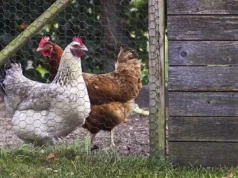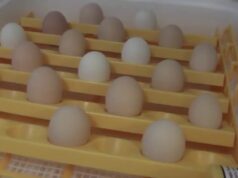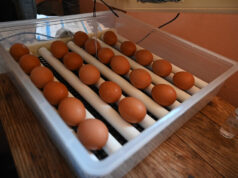If you’re diving into the delightful world of raising chicks, then mastering the art of using a chick brooder is a vital step to ensure their growth and well-being. A well-prepared brooder ensures that your chicks stay warm, healthy, and thrive to become strong adult chickens.
Understanding the essentials of a chick brooder checklist is crucial whether you’re a newbie or a seasoned chicken enthusiast. This guide will walk you through all the important aspects needed to establish an effective brooding environment.

What is a Chick Brooder?
A chick brooder provides a safe and warm environment for baby chicks just hatching out of their eggs. It’s a simulated environment to provide warmth, light, food, and water everything chicks would have benefited from if raised by a mother hen.
Before proceeding, if you are not familiar with what a chick brooder entails, read more details here.
Choosing the Right Container
It all starts with selecting the right enclosure. You want a container that is large enough for your number of chicks and allows air circulation. Popular choices include cardboard boxes, plastic storage bins, and large tubs.
Size Matters
For small batches of chicks, something like a large plastic bin can work well. However, scale up with the number of chicks, ensuring a minimum of 0.5 square foot per chick for the first few weeks. As the chicks grow, expand their space.
Heating Setup
The temperature in the brooder is critical. Chicks need a starting temperature of about 95F, which is gradually reduced over the weeks. Use a heat lamp or brooder heater and make sure to place it at a side so the chicks can move closer or further away depending on their heat needs.
For more detailed instructions on heating a brooder, check out this guide on brooder heating basics.
Litter and Bedding Options
The flooring of your brooder should provide both cleanliness and comfort. Pine shavings are a common choice due to their absorbency and gentle texture. Avoid using newspaper as its too slippery and can cause ‘splayed legs’ in chicks.
Maintenance and Cleanliness
Regular changing and cleaning of the bedding is essential. Rotate out the used shavings or straw to maintain a hygienic condition and prevent disease.
Feeder and Waterer Setup
Chicks should have constant access to clean, fresh water and feed. Specially designed chick feeders and waterers prevent mess and ensure accessibility.
Its crucial to elevate the waterer slightly to avoid litter contamination. Additionally, consider adding small marbles to the waterer to prevent the chicks from falling in.
Light Requirements
Chicks require approximately 23 hours of light daily for their first week. Use a 40 to 60-watt bulb after the first month to help regulate their sleep.
Managing Brooder Temperature
Consistency in temperature is crucial. Use a reliable thermometer to check the brooder temperature regularly. Learn more about setting the right temperature here.
Monitoring Chick Development
Its important to observe your chicks daily. Notice behavior like huddling indicating they’re cold or spreading away from the warmth if they’re too hot.
Transitioning to the Coop
Once your chicks are fully feathered at about 6-8 weeks, they’re ready to be transitioned to the coop, assuming outdoor temperatures are moderate. Gradual exposure to outside conditions prepares them for this transition.
For more preparation tips, visit this article on brooder setup.
Common Issues and Solutions
Problems like ‘pasty butt’ can occur, where droppings stick to the chicks vent, causing blockage. Regular checks and warm water cleaning can help. For more complex issues, consulting with a vet is advised.
Essential Supplies Checklist
- Brooder box
- Heat source
- Thermometer
- Feeder
- Waterer
- Bedding
- Chick starter feed
Healthy Chick Diet
Ensure to provide a starter feed formulated for chicks. This contains the exact nutrients required for their growth.

FAQs
- How long do chicks stay in a brooder?
Chicks generally stay in the brooder until they are about 6 to 8 weeks old or fully feathered. - How can you tell if chicks are too cold?
If chicks are huddled together directly under the heat lamp, its a sign they’re cold and the heat needs adjustment. - Why are my chicks picking on each other?
This behavior could be due to overcrowding, too much light, or nutritional deficiencies.
This article contains affiliate links. We may earn a commission at no extra cost to you.











